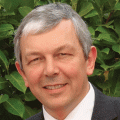Synchronising the skies
- Like
- Digg
- Del
- Tumblr
- VKontakte
- Buffer
- Love This
- Odnoklassniki
- Meneame
- Blogger
- Amazon
- Yahoo Mail
- Gmail
- AOL
- Newsvine
- HackerNews
- Evernote
- MySpace
- Mail.ru
- Viadeo
- Line
- Comments
- Yummly
- SMS
- Viber
- Telegram
- Subscribe
- Skype
- Facebook Messenger
- Kakao
- LiveJournal
- Yammer
- Edgar
- Fintel
- Mix
- Instapaper
- Copy Link
Posted: 15 April 2016 | Guillaume Auquier (Aéroports de Paris) | No comments yet
With SESAR deployment in the Paris area fully underway, Guillaume Auquier, Deputy Director of the Single European Sky Unit at Aéroports de Paris, presents the airport operator’s perspective on progress to date.


Aéroports de Paris (ADP) is the airport operator of Paris-Charles De Gaulle, Paris-Orly and Paris-Le Bourget airports, all located in the Paris terminal maneuvering area (TMA), where air navigation services are provided by the Direction des Services de Navigation Aérienne (DSNA). As a member of SEAC (the SESAR European Airports Consortium, also comprising London Heathrow, Flughafen München, Fraport, Amsterdam Schiphol and Flughafen Zurich), ADP has been a part of the SESAR project from the beginning. SEAC has helped to give airports a voice and be heard more widely against major players such as air navigation service providers (ANSPs) and manufacturers.
Overall the approach has been to go a step beyond the Airport-Collaborative Decision Making (A-CDM) solution, which has already been implemented by ADP and around 20 other European airports, with expected improvements in both nominal and adverse situations for the benefit of the passengers.
In SESAR 1, SEAC’s involvement mostly concentrated on projects related to airport operations, and in particular the high-level area of airport operations management including:
- Airport Operations Plan (AOP)
- Airport capacity flow management
- Adverse conditions management
- Airport demand and capacity balancing
- Airport Operations Centre (APOC), which ADP is currently validating.
Furthermore, ADP has been strongly involved in the area of safety, particularly airport safety nets, a project led by DSNA, with a live trial validation at Paris-CDG Airport.
ADP intends to participate in SESAR 2020 through a new SEAC consortium, building on the collaborative work already achieved in SESAR 1. Based on the work achieved around airport operations management, SEAC expects to achieve a decisive step forward in airport and network collaboration and play a leading role in taking forward the Total Airport Management (TAM) concept with the integration of airside and landside management.
PCP and Deployment Manager
Back in 2012, ADP provided experts for the SESAR Joint Undertaking group mandated by DG MOVE to set up the content of the future Pilot Common Project (PCP). In 2014, together with the other SEAC members and ACI Europe, ADP participated to the consultation of the draft Commission Implementing Regulation on the establishment of the PCP that led to its endorsement in April 2014 and its adoption in June (IR 716/2014).
During 2014 ADP, together with ACI Europe, was deeply involved in the setting up of SESAR Airport Grouping (SDAG) – a European Economic Interest Grouping representing the 25 PCP concerned airports and key partner in the SESAR Deployment Alliance, a unique industry consortium representing airlines, airports and ANSPs. The partnership agreement with the European Commission was signed in December 2014 and on 1 January 2015 became the ‘SESAR Deployment Manager’.


Figure 1: Gap analysis scheme of AF2 family A-SMGCS Level 1 and 2 provided by the Deployment Manager
Deployment projects at Paris airports
ADP is required to implement projects at Paris airports as part of Regulation (EU) 716/2014 on the establishment of the PCP where CDG and Orly airports were among the list of 25 designated airports chosen due to their traffic and density.
The improvement of local traffic flow management will benefit all stakeholders and network users – the airports themselves, airlines, ANSPs and, above all, passengers. And efficiency improvement of the network will benefit Paris airports in return.
Other major opportunities that arose included:
- Improvement through new technologies implementation consistent with ADP innovative actions
- Coordination and synchronisation provided by the Deployment Manager
- The European Commission Connecting Europe Facility (CEF) calls for funding of projects that accelerate the implementations with faster benefits for the community (see below).
CEF call 2014
Seven projects, led by ADP, were awarded in the CEF call 2014. All of them concerning ATM functionality (AF) #2: Airport Integration and Throughput, and apportioned to families: Basic A-CDM; Initial AOP; Integrating Surface Management Constraints; A-SMGCS (Advanced Surface Movement Guidance and Control Systems) Level 1 and 2, Automated Assistance to Controller for Surface Movement Planning and Routing and A-SMGCS Planning and Routing Functions.
The scope is common to both CDG and Orly airports for four of these categories and specific to one of the airports for the other three categories. Three projects have safety as the main objective with a direct impact on this domain, and the four others have operational efficiency as the main objective with direct impact on throughput. Additionally, the projects have many links to other functionalities: (AF#4), sub-AFs (2.5), families with a high level of interdependencies between them and projects led by other partners including DSNA and the Network Manager. Details of these projects can be found in the Deployment Programme 2015 (DP 2015), released by the Deployment Manager on November 2015.
CEF call 2015
Six projects have been presented to the CEF call 2015. Two, led by DSNA with ADP as partner, concern AF#1: Extended AMAN and PBN in high density TMA and family AMAN upgrade to include extended horizon function. And four others, led by ADP with DSNA and Air France as partners, concern AF#2: Airport Integration and Throughput and apportioned to families: Basic A-CDM and Initial AOP.
The scope is common to both CDG and Orly airports for three of those projects and specific to each airport for two of them. The objectives for those projects are mainly efficiency.
All details on those projects, if awarded, will be found in the next Deployment Programme 2016 V2, to be released in June 2016 with the CEF call 2015 results.
The influence of the Deployment Manager
For the CEF call 2014, delays were short, conditions were unclear and the Deployment Manager had only recently been set up with a first Pre-Deployment Programme. Therefore, even with the help of the SDAG, a good knowledge and expertise of the SESAR ‘world’ was necessary to choose projects to be submitted. Those projects had to be simple and fast-tracked, and stakeholders (at least in the Parisian area) had no time to handle multi-partner projects.
Since then, ADP has seen the important work of the Deployment Manager and perceived its effect on stakeholders. The Deployment Programme now provides more accessibility to the SESAR deployment activities for all partners.
In particular, the Deployment Manager procures a very detailed monitoring focused on SESAR Baseline and Pilot Common projects. This monitoring clarified the missions between the different stakeholders regarding those projects and, at least for ADP, helped us to better follow and manage project costs and planning risks.
Moreover, awarded projects under the CEF call 2014 also emphasises enhanced monitoring to stakeholders; forcing them to better formalise the management of those projects for the need of traceability and to prepare for the rightful audit associated with funding.
The gap analysis has been established in strict cooperation with operational stakeholders and with the support of the Network Manager, in order to identify – for each family – those implementation initiatives still needed towards the full PCP implementation. It focused on the Full Operational Capability date and milestones. As such, it facilitated the identification of the submitted projects for the CEF call 2015 and goes some way to explaining the increase of multi-partner projects compared to the CEF 2014 call.
Of course, project deployment still must be synchronised at local level, with the different stakeholders, for example DSNA and Air France in the Paris area. As such, the local CDG roadmap ‘CDG2020’ establishes the converging interest between partners and the consistency with their respective strategic plan ‘Connect 2020’ as far as ADP is concerned. This coordination is the main performance driven selection of projects to be implemented, PCP ones as well as other non PCP projects from the ATM Master Plan.


Issue
Related topics
Air traffic control/management (ATC/ATM), Airport Collaborative Decision Making (A-CDM)
Related airports
Paris Charles de Gaulle Airport (CDG), Paris Le Bourget, Paris-Orly (ORY)


















